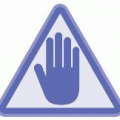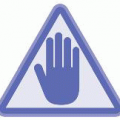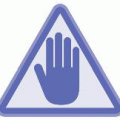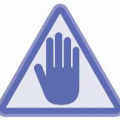Standards of Practice
Sharon M. Weinstein
KEY TERMS
Beneficence
Body of Evidence
Competencies
Educational
Requirements
Fidelity
Global Authority
Nonmaleficence
Practice Criteria
Scope of Practice
Standards of Practice
THE STANDARDS
The Infusion Nurses Society (INS) has established the scope of practice, competencies, and educational requirements for the administration of infusion therapy and has set forth Standards of Practice. INS is recognized as the global authority in infusion nursing. As the science and research of infusion nursing expands and technology advances, the Standards are revised and updated consistent with practice. The Standards are written to be applicable to all care settings in which infusion therapy is delivered and to address all clinical patient populations. The most current edition of the Standards defines practice criteria supported by the latest available research and further ranks the strength of the body of evidence reviewed (INS, 2011).
NURSING PRACTICE
In this section, the Standards address the practice setting; patient-specific populations, including neonatal and pediatric patients and older adult patients; as well as ethics, scope of practice, competencies, quality improvement, the evidence base, and policies and procedures for clinical practice.
The Standards allow for those inside and outside the profession to judge the competency of nurses practicing infusion therapy. As a method of public protection, the Standards address the need for the nurse to be competent in the safe delivery of infusion therapy within his or her scope of practice (INS, 2011).
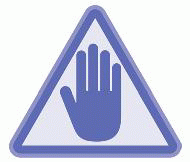 PATIENT SAFETY
PATIENT SAFETYCompetencies are a critical element in ensuring patient safety.
Throughout this chapter, the authors highlight key standards and the relevant practice criteria. (Standards are printed in italics; practice criteria are not in italics.) How well the nurse integrates the Standards and practice criteria is one way to evaluate competence in specialty IV nursing practice. The reader is referred to the INS for a full copy of the Standards document.
Practice Setting
STANDARD
The Infusion Nursing Standards of Practice shall be applied and met in all practice settings. Administration of infusion therapy shall be established in organizational policies, procedures, and/or practice guidelines. Administration of infusion therapy shall be in accordance with rules and regulations promulgated by the state’s Board of Nursing and federal and state regulatory and accrediting agencies in all practice settings.
Neonatal and Pediatric Patients
STANDARD
The nurse providing infusion therapy for neonatal and pediatric patients shall have clinical knowledge and technical expertise with regard to this population. Clinical management of neonatal and pediatric patients shall be established in organizational policy, procedures, and/or practice guidelines and in accordance with applicable standards of care. The nurse shall verify that informed consent for treatment of neonatal and pediatric patients, as well as those patients who are deemed emancipated minors of mature majors, is documented.
Ethics
STANDARD
Ethical principles shall be the foundation for decision making and patient advocacy. Guidelines and resources for ethical issues shall be outlined in organizational policies, procedures, and/or practice guidelines. The nurse shall act as a patient advocate; maintain patient confidentiality, safety, and security; and respect, promote, and preserve human anatomy, dignity, rights, and diversity. Principles of beneficence, nonmaleficence, fidelity, protection of patient autonomy, justice, and veracity shall dictate nursing action.
Scope of Practice
STANDARD
The scope of practice for each type of person involved with the delivery of infusion therapy shall be organized to support patient safety and protection and shall clearly define the roles, responsibilities, tasks and range of services, and accountability for all levels of personnel involved with the delivery of infusion therapy. All licensed nursing personnel shall possess a license in standing with the state’s Board of Nursing. All personal shall practice within the legal boundaries of individual license or scope of practice. The RN shall be accountable for patient safety in the delivery of infusion care. The scope continues to address communication, the role of assistive personnel, and delegation of infusion therapy tasks. The reader can clearly see that the upgraded and updated Standards reflect the specialty practice and patient safety.
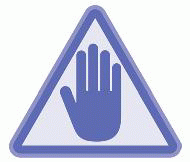 PATIENT SAFETY
PATIENT SAFETYThe scope of practice revolves around patient safety and protection.
PRACTICE CRITERIA
The legal scope of practice for all licensed health care professions is defined in the state statute governing each profession.
The method for making scope of practice decisions is different for each state’s Board of Nursing and includes a decision tree model, declaratory ruling, and advisory opinions.
Decisions about the scope of practice for each type of personnel involved with infusion therapy should focus on nursing assistive personnel, medical assistant, licensed practical/vocational nurses, registered nurses, infusion nursing specialists (CRNI), and advanced practice nurses.
Quality Improvement
STANDARD
The nurse shall participate in quality improvement activities that advance patient care, quality, and safety.
PRACTICE CRITERIA
Quality improvement activities include evaluation of patient or clinical outcomes; identifying clinical indictors, benchmarks, and areas for improvement; providing best evidence; recommending and implementing changes in structures or processes; analyzing date and outcomes against benchmarks; considering the use of cost analysis; or minimizing and eliminating barriers to change and improvement.
The quality improvement program should create a culture that fosters the reporting and analysis of quality and safety indictor outcomes, near misses, errors, and adverse events. The program should focus on systems and processes that promote individual accountability and a just culture.
The knowledge gained through this process should be shared internally and externally with other health care providers and organizations.
Stay updated, free articles. Join our Telegram channel

Full access? Get Clinical Tree



